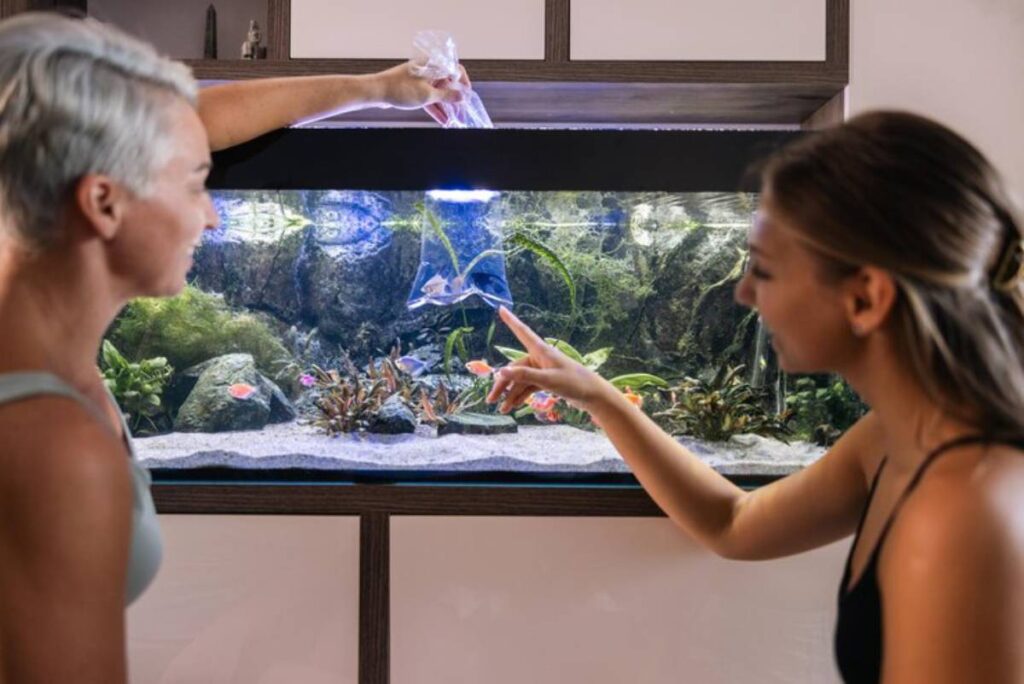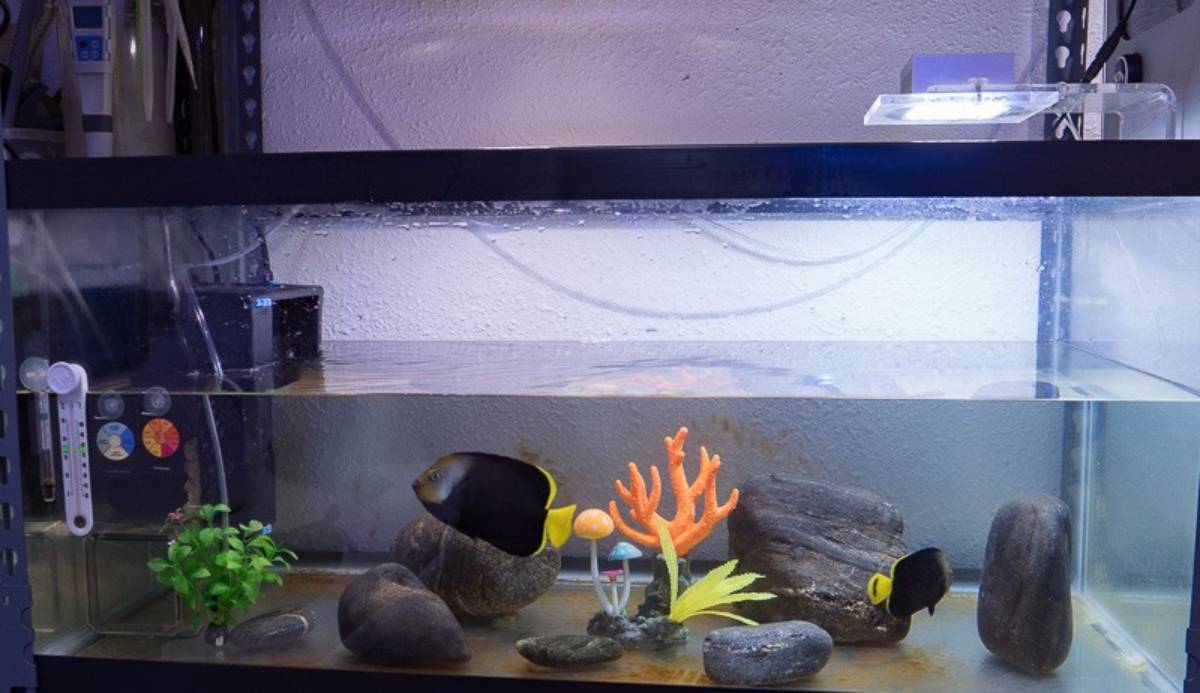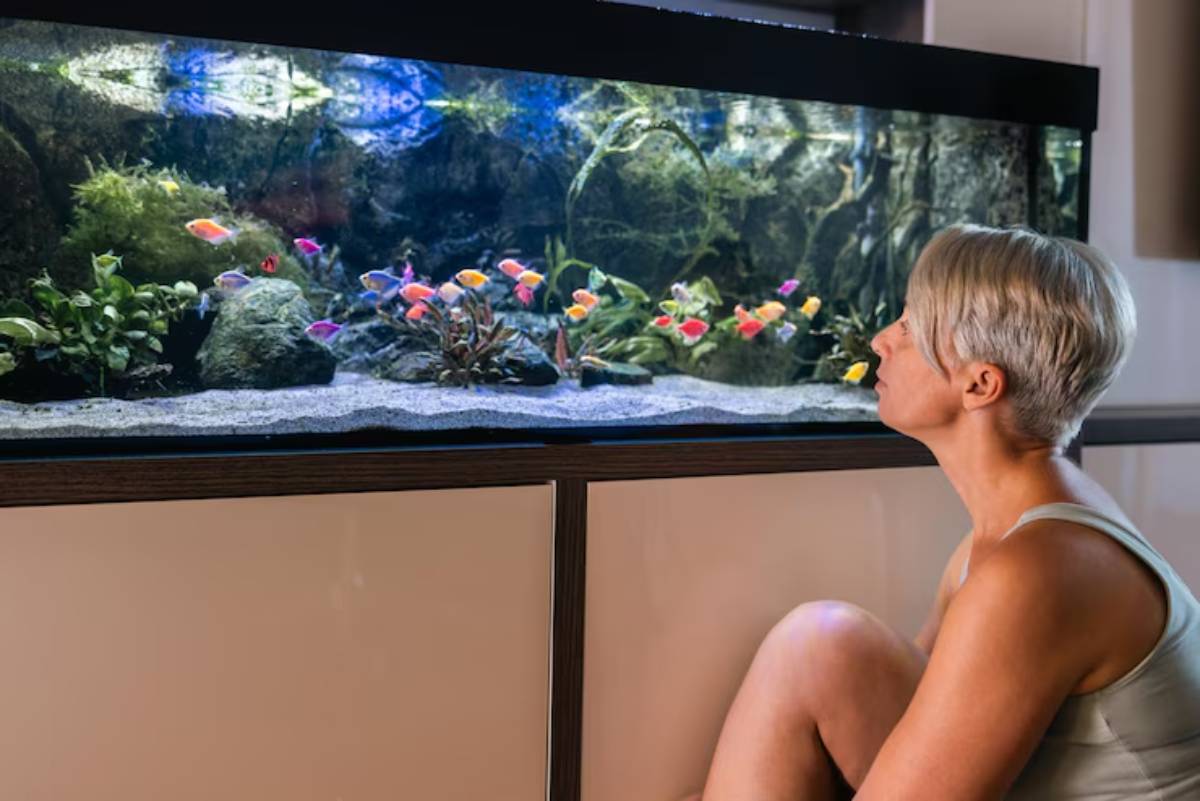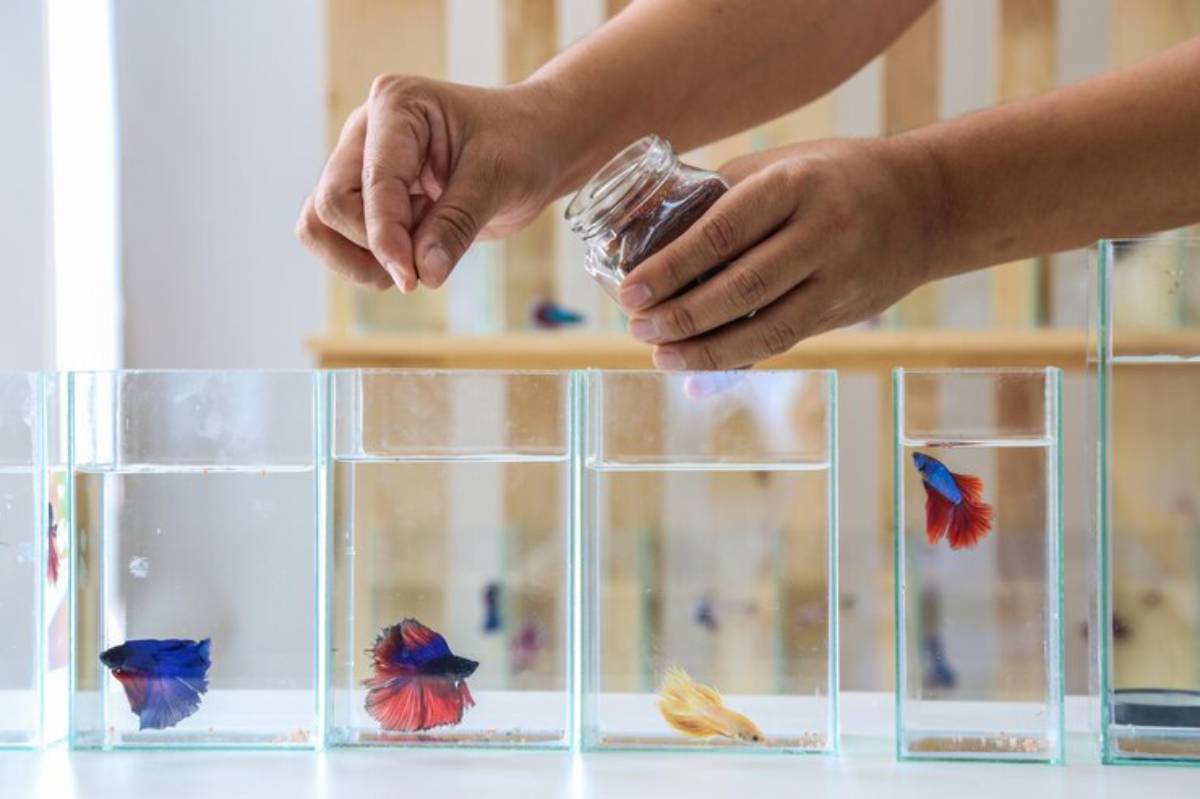The Pets Care Blog

How to Introduce New Fish Without Causing Stress
You’ve set up a beautiful aquarium. The water’s cycled, the plants are thriving, and now it’s time for the most exciting part — adding fish. But before you float that bag in the water, take a deep breath.
Introducing new fish isn’t just about plopping them in. Done incorrectly, it can lead to shock, aggression, illness, or even death. But when done right, it becomes a smooth transition that enriches your aquarium and gives your fish the start they deserve.
This guide will show you how to add new fish safely, using methods that both protect your existing tank inhabitants and prevent fish stress. Whether you’re introducing your very first guppies or adding a new school to an established tank, this is your go-to resource for safe, stress-free fishkeeping.
Why Fish Get Stressed — And Why It Matters
Fish stress isn’t just a mood — it’s a physiological response that weakens their immune systems, makes them vulnerable to disease, and can even change their behaviour.
Common Stress Triggers:
- Sudden changes in temperature or pH
- Overcrowding or poor tank compatibility
- Being transported in a small bag
- Exposure to toxins like ammonia or chlorine
- Aggressive tank mates
Important: Stress symptoms aren’t always visible immediately — a fish that looks fine today could fall ill a few days later.
The Acclimation Process: What It Means and Why It Matters
Acclimating fish means gradually introducing them to the water conditions in your aquarium, such as temperature, pH, and mineral content, to avoid shocking their system.
The process can take 30–90 minutes, but the impact lasts a lifetime. Think of it like moving to a new country if you’re dropped into a different climate, diet, and language overnight, you’d feel overwhelmed too.
Quick Reference: Safe Fish Introduction Checklist
- Quarantine new fish for 2–4 weeks
- Match the tank temperature before opening the bag
- Use the drip or float method to acclimate
- Dim the lights during the introduction
- Add fish gently using a soft net
- Observe for aggression or stress
- Avoid feeding for the first few hours
Step-by-Step Guide: Adding New Fish Safely
Step 1: Quarantine Your New Fish

It might be tempting to skip this step, but quarantining is the most important thing you can do to protect your main tank.
Why quarantine?
- Prevents spreading disease to healthy fish
- Allows observation for signs of illness or parasites
- Reduces transport stress in a quieter environment
Use a separate 20–40 litre tank with a sponge filter and heater. Keep it bare-bottom for easy monitoring.
Step 2: Match Water Temperature
Float the unopened fish bag in your main tank or quarantine tank for 15–20 minutes. This equalises the temperature gradually.
Pro Tip: Tape a towel around the glass to reduce visual stress from movement and light.
Step 3: Open the Bag and Begin Acclimation
There are two methods you can use:
A) Drip Acclimation (Best for sensitive or expensive fish)
- Place the fish and the bag of water into a small bucket
- Start a slow siphon from your tank using airline tubing
- Let water drip at 2–4 drops per second for 45–60 minutes
- Once the volume has doubled or tripled, your fish is ready
B) Float Acclimation (Simpler method)
- Every 5 minutes, add ¼ cup of tank water to the bag
- Repeat for 30–45 minutes
- Net the fish out, discard the bag water, and release them into the tank
Step 4: Dim the Lights
Bright lights can shock fish during introduction. Keep lights low for the first hour and reduce sudden movement around the tank.
Secret Tip: Add fish just before the tank’s night cycle — they’ll settle in more peacefully.
Step 5: Use a Net to Transfer the Fish
Never pour pet store bag water into your tank.
- Excess ammonia
- Pathogens or parasites
- Stress hormones or antibiotics
Instead, use a soft net to gently move the fish from the acclimation container into the tank.
Step 6: Observe and Monitor

Keep a close eye on your new arrivals and their interactions.
Signs of healthy adjustment:
- Exploring the tank
- Schooling with others
- Regular breathing
Watch out for:
- Hiding constantly
- Gasping at the surface
- Chased or bullied by other fish
- Flashing (rubbing against objects)
You may need to adjust your setup, such as adding more plants or caves, to prevent fish stress caused by aggression or lack of hiding spaces.
Best Practices for Long-Term Success
Add Fish in Stages
Don’t stock your tank all at once. Give your filter time to adjust to the increased bio-load.
Start with 2–3 fish, especially in smaller tanks, and wait a week or two before introducing more.
Feed Sparingly

Wait several hours (or until the next day) to feed new fish. A full belly right after a stressful move can cause digestive problems.
Maintain Water Quality
A spike in waste can occur after new fish are added.
- Test ammonia, nitrite, and nitrate daily for the first week
- Perform a 25% water change if levels rise
- Avoid cleaning the filter during this time
For more on managing your water after adding fish, see the weekly aquarium maintenance checklist.
Provide Enough Territory
Fish need space. Overcrowding causes stress and territorial fights.
- Stick to the recommended number of fish per litre
- Rearrange the décor slightly before adding newcomers
- Add extra plants or structures to break the line of sight
Want to design a fish-friendly layout? Read our guide to arranging décor for fish safety and aesthetics.
FAQs: Introducing New Fish Safely
How long should I quarantine new fish?
A minimum of 2 weeks, but ideally 4. This allows enough time for any hidden illnesses to show.
Should I acclimate fish bought online differently?
Yes — they’ve usually been in transit longer and may need slower drip acclimation. The float method may not be enough.
What if my existing fish are aggressive?
Use a divider for the first 24 hours or add multiple fish at once to prevent singling out. Adding fish after rearranging décor also helps reduce territory battles.
Can I use bottled acclimation solutions?
Some products claim to reduce stress, but they don’t replace acclimation. Use them as a supplement, not a substitute.
Conclusion: Stress-Free Fishkeeping Starts Here
Introducing new fish should be a celebration, not a cause for worry. When done with care, it strengthens your aquarium community and keeps everyone healthy and thriving.
From acclimating fish to monitoring their behaviour, these steps will help you add fish with confidence. Remember, going slow isn’t just safer — it’s smarter.
Your next move: Bookmark this guide for every future addition. And if you’ve just introduced new fish, take a quiet moment to observe them — you’ve earned it.









